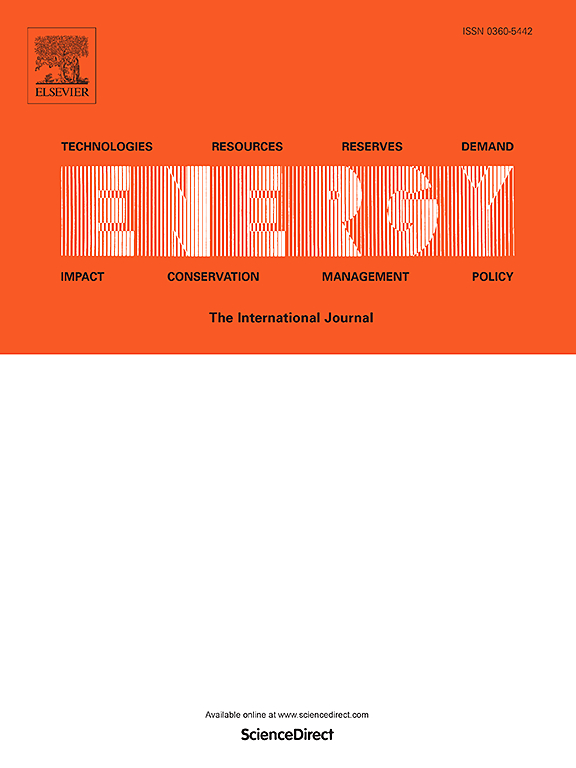An enhanced performance scythe-shaped bending-torsion coupling wind energy harvester excited by magnetic force
IF 9
1区 工程技术
Q1 ENERGY & FUELS
引用次数: 0
Abstract
Piezoelectric energy harvesters leveraging wind energy provide a solution for autonomous power in wireless electronic devices, driving advancements in wireless sensor networks and IoT technologies. This work presents a magnetic-excited scythe-shaped wind energy harvester (S-WEH) inspired by traditional scythes. The piezo oscillator comprises a vertical piezo beam and a horizontal auxiliary beam, mimicking the silhouette of a scythe. The motion of auxiliary beam impacts the piezo beam, inducing torsion during first-order vibration and bending during second-order vibration. Consequently, this work focuses on the influence of the auxiliary beam on the vibration response and power generation performance of the piezo beam. A combination of theoretical modelling and finite element analysis is employed to streamline the complex magnet-solid-electric multi-physics finite element calculations, with the method's validity and applicability validated through experimental results. Findings indicate that, with an auxiliary beam length, La, of 20 mm–50 mm, and a tip mass, ma, of 8.4 g, increasing the length of auxiliary beam reduces the average voltage at the first-order resonance by 83.8 %, but boosts it at the second-order resonance by 166.1 %. Besides, at a wind speed of about 9 m/s, the S-WEH successfully transmitted temperature data to a mobile device after charging a Bluetooth temperature sensor for 5 s.
求助全文
约1分钟内获得全文
求助全文
来源期刊

Energy
工程技术-能源与燃料
CiteScore
15.30
自引率
14.40%
发文量
0
审稿时长
14.2 weeks
期刊介绍:
Energy is a multidisciplinary, international journal that publishes research and analysis in the field of energy engineering. Our aim is to become a leading peer-reviewed platform and a trusted source of information for energy-related topics.
The journal covers a range of areas including mechanical engineering, thermal sciences, and energy analysis. We are particularly interested in research on energy modelling, prediction, integrated energy systems, planning, and management.
Additionally, we welcome papers on energy conservation, efficiency, biomass and bioenergy, renewable energy, electricity supply and demand, energy storage, buildings, and economic and policy issues. These topics should align with our broader multidisciplinary focus.
 求助内容:
求助内容: 应助结果提醒方式:
应助结果提醒方式:


